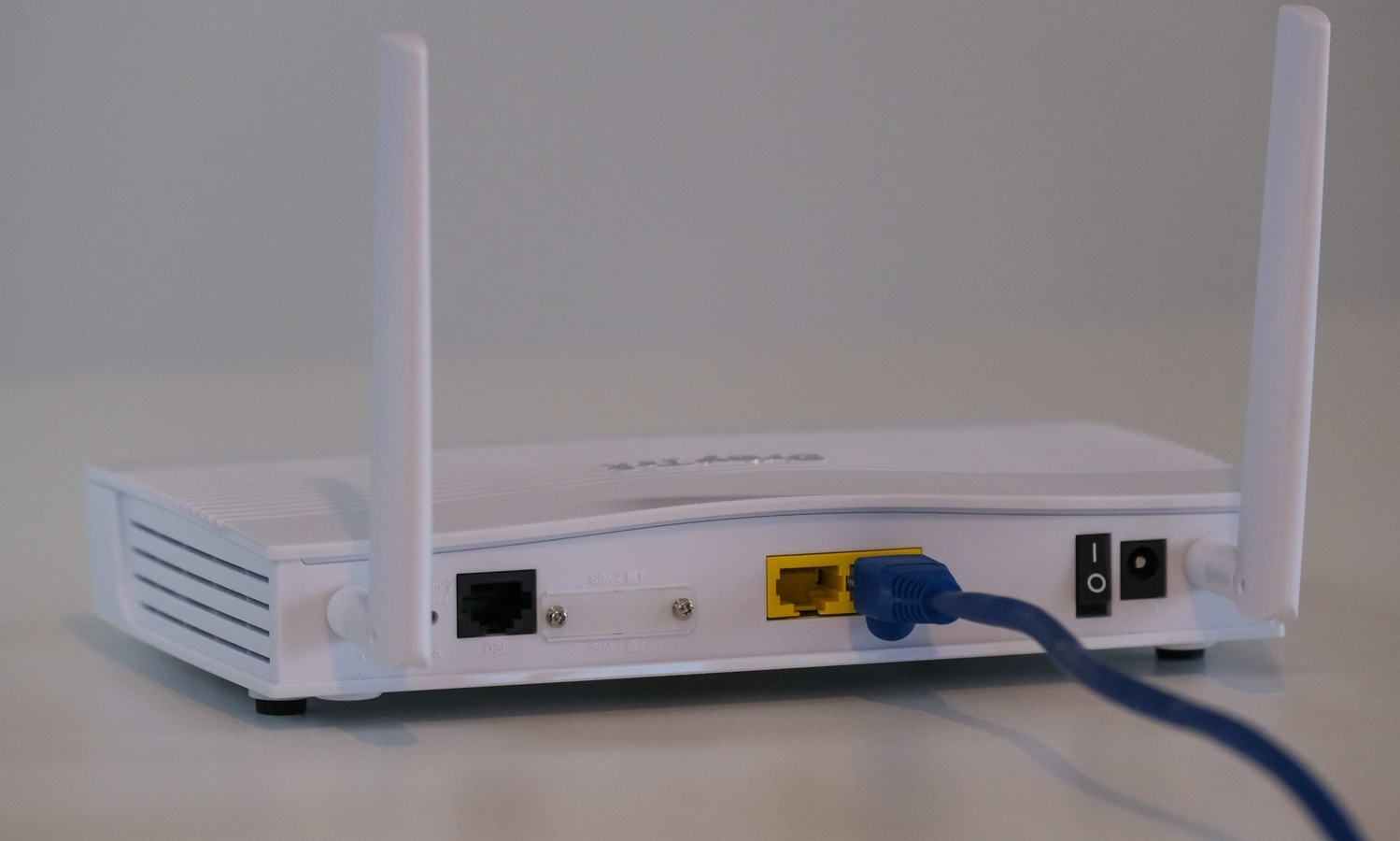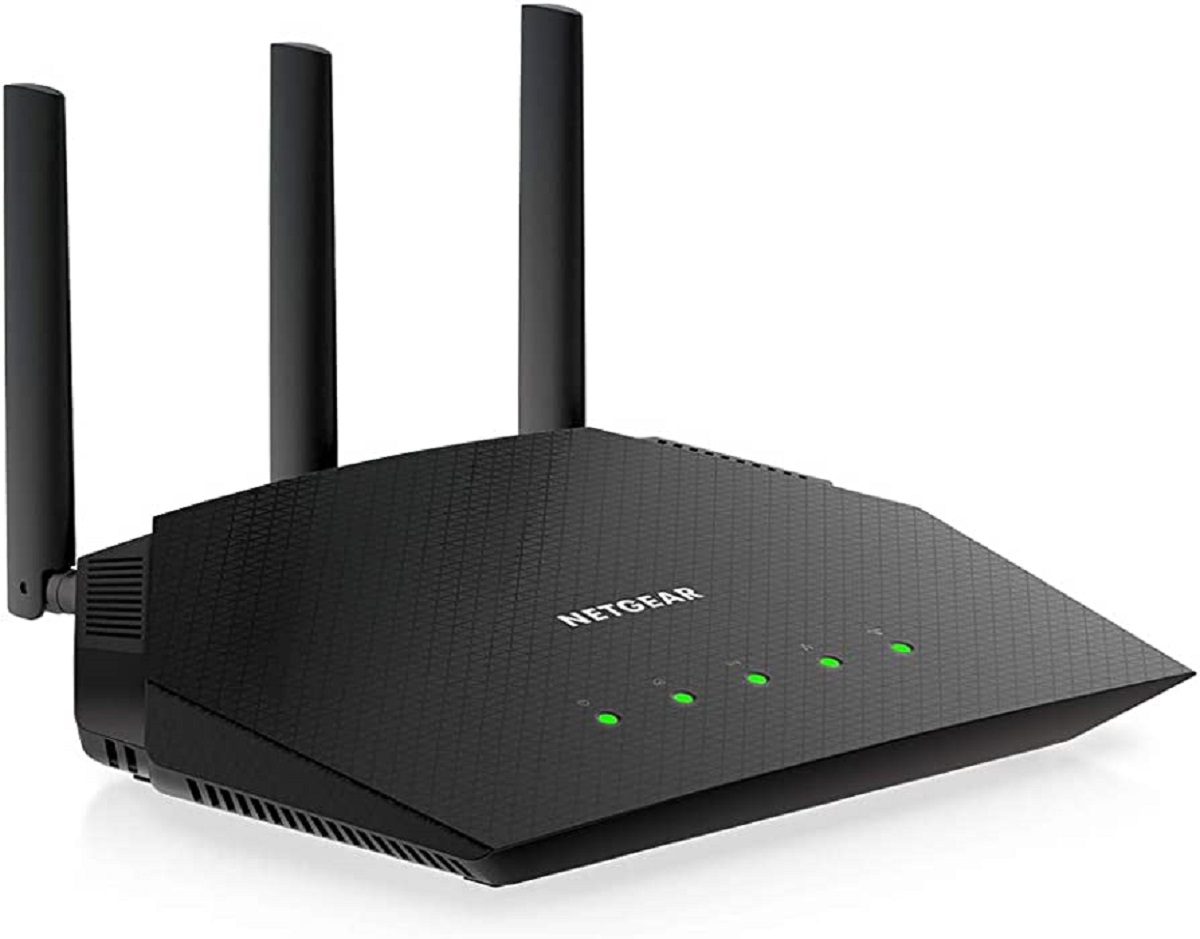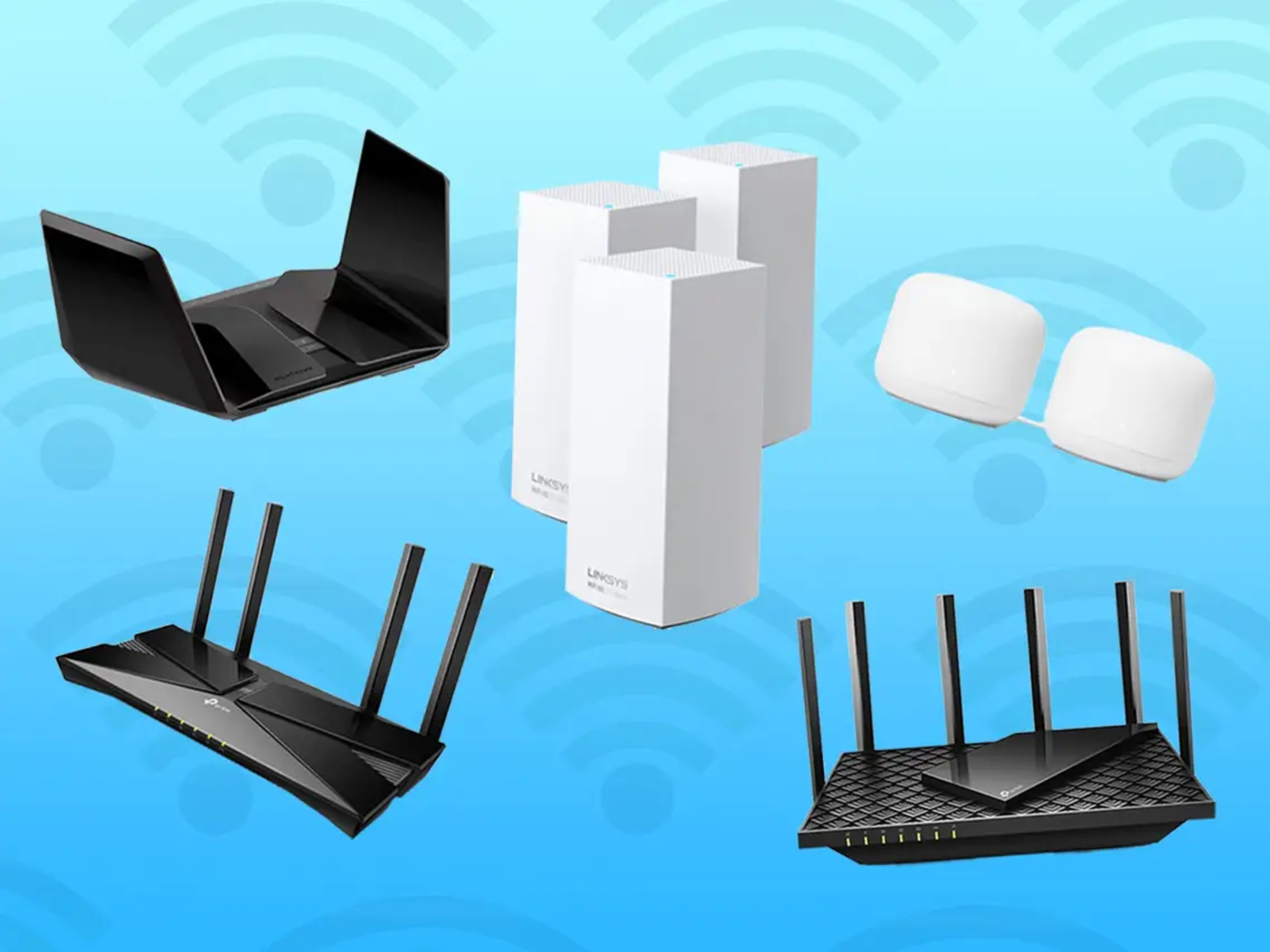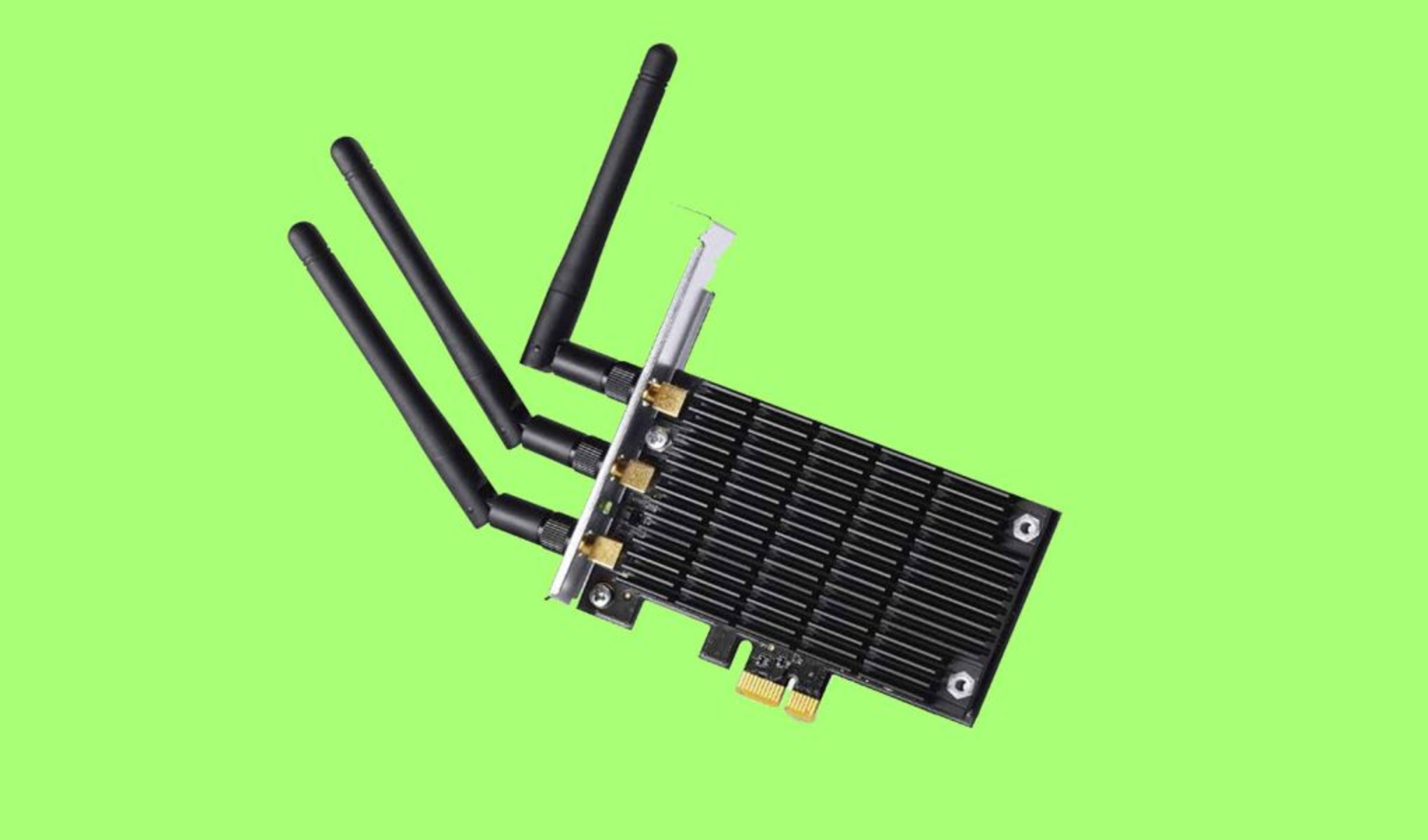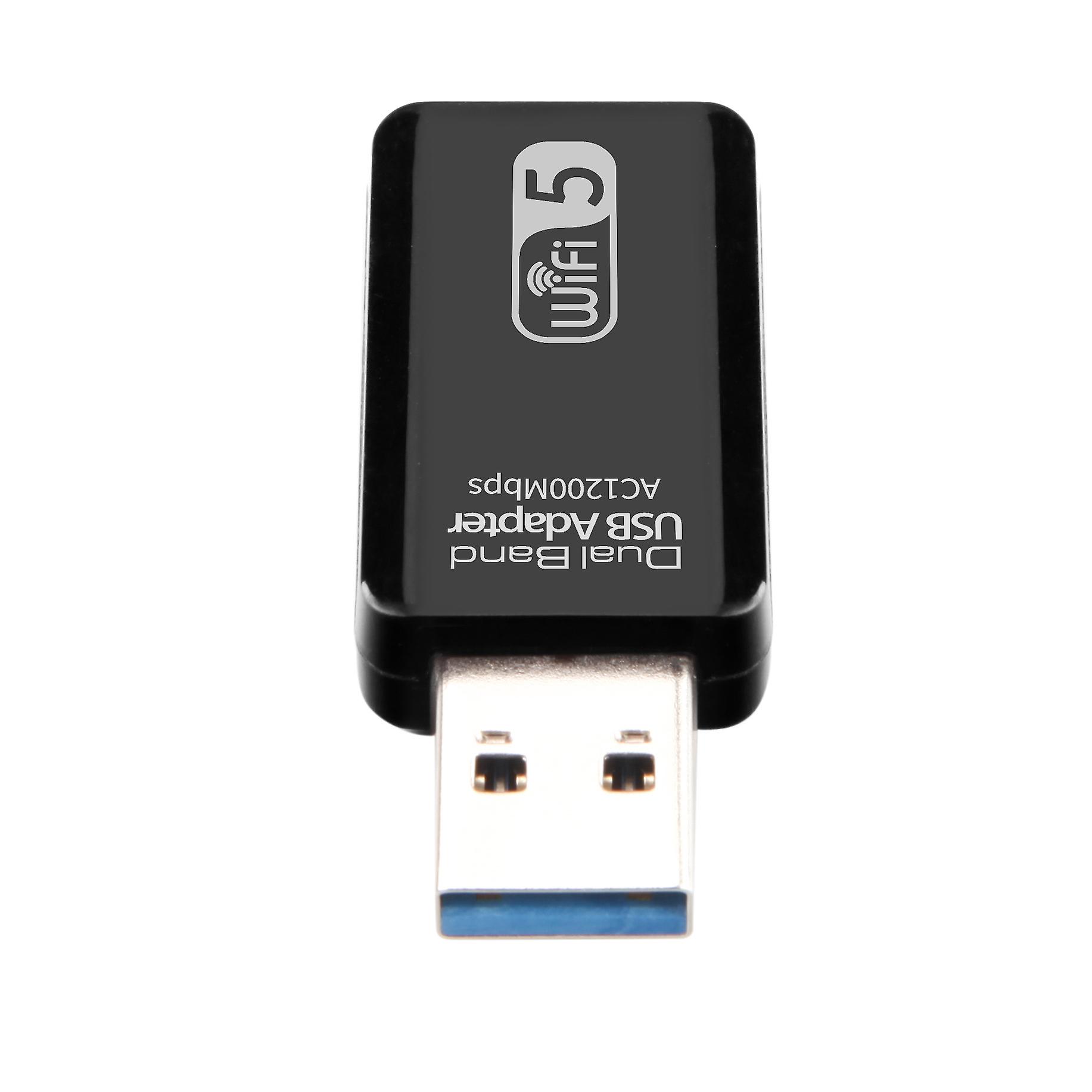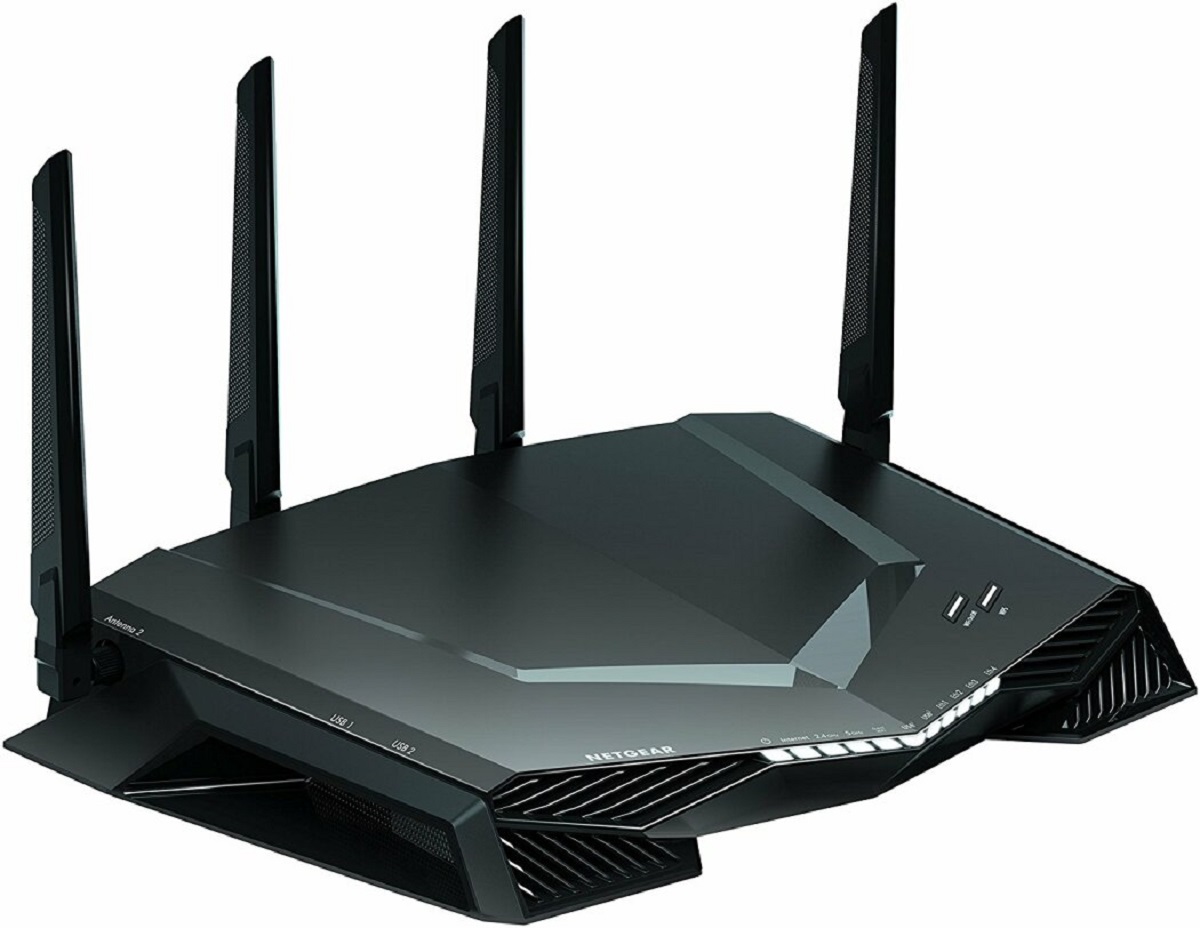Introduction
Wi-Fi has become an essential part of our daily lives. Whether at home, in the office, or in public spaces, a strong and fast Wi-Fi connection is crucial for staying connected, being productive, and enjoying online activities. But what exactly is Wi-Fi speed, and how do you determine what is considered “good”?
Wi-Fi speed refers to the rate at which data is transmitted over a wireless network. It is measured in megabits per second (Mbps) and determines how quickly you can download, upload, stream, and perform other online activities.
Understanding what constitutes a good Wi-Fi speed is important because it can greatly impact your online experience. Slow internet speeds can lead to frustratingly slow web page loading times, buffering while streaming videos, and lag during online gaming sessions. On the other hand, a fast and reliable Wi-Fi connection ensures smooth browsing, seamless video streaming, and optimal gaming performance.
Before we explore what is considered a good Wi-Fi speed, let’s delve into how Wi-Fi speed is measured and the factors that can affect it.
What is Wi-Fi speed?
Wi-Fi speed refers to the rate at which information is transmitted over a wireless network. It is a measure of how quickly data can be transferred between your device and the internet. Wi-Fi speed is typically measured in megabits per second (Mbps).
When you connect to a Wi-Fi network, whether it’s at home, in a coffee shop, or at work, the speed of the connection determines how fast you can access and transfer data. This includes browsing the web, downloading files, streaming videos, playing online games, and more.
Wi-Fi speed is not the same as your internet speed. Your internet speed is determined by your internet service provider (ISP), while Wi-Fi speed is influenced by factors like the quality of your router, the distance between your device and the router, and any physical barriers that might obstruct the signal.
It is important to note that the Wi-Fi speed advertised by your ISP is the maximum speed the connection can support under ideal conditions. In reality, your actual Wi-Fi speed may be lower due to various factors.
Wi-Fi speed can vary significantly from one location to another. For example, a home or office with an excellent router and minimal interference may provide high-speed Wi-Fi, while a congested public place with multiple devices connected to the same network may result in slower speeds.
Understanding your Wi-Fi speed is crucial because it enables you to determine if your connection is suitable for your online activities. For example, browsing websites, checking emails, and using social media typically require lower speeds, while streaming high-definition videos, playing online games, and downloading large files demand faster speeds.
Now that we have a clear understanding of what Wi-Fi speed is, let’s delve deeper into how it is measured and the factors that can affect it.
How is Wi-Fi speed measured?
Wi-Fi speed is measured in megabits per second (Mbps), which indicates the rate at which data can be transmitted over a wireless network. The higher the Mbps, the faster the Wi-Fi connection.
There are two key measurements when it comes to Wi-Fi speed:
- Download speed: This refers to how quickly data can be transferred from the internet to your device. For example, when you stream a video or download a file, the download speed determines how fast the content is delivered to you.
- Upload speed: This refers to how quickly data can be sent from your device to the internet. It is important for activities like video conferencing, online file sharing, and uploading content to websites or cloud storage.
Internet service providers (ISPs) usually advertise their internet plans with an “up to” download and upload speed. This means that the advertised speed is the maximum speed available, often under ideal conditions, and actual speeds may vary depending on several factors.
There are various tools and websites available that allow you to test your Wi-Fi speed. These speed tests measures the actual download and upload speeds you are experiencing at a given moment. It is recommended to conduct multiple tests at different times to get a more accurate average speed.
When performing a Wi-Fi speed test, it is important to be close to the router and eliminate any potential interference. This ensures that you are measuring the maximum speed your connection can achieve without any external factors affecting the results.
Keep in mind that the Wi-Fi speed you get on your device may not always match the advertised speed of your internet plan. Factors such as the number of devices connected to the network, signal interference, distance from the router, and the quality of your router can all affect the actual Wi-Fi speed you experience.
Now that we understand how Wi-Fi speed is measured, let’s explore the different factors that can impact your Wi-Fi speed.
Factors that affect Wi-Fi speed
Several factors can influence the speed and performance of your Wi-Fi connection. Understanding these factors can help you identify potential issues and improve your Wi-Fi speed. Here are some common factors that can affect Wi-Fi speed:
- Distance from the router: The distance between your device and the router can have a significant impact on Wi-Fi speed. Generally, the farther away you are from the router, the weaker the signal will be, resulting in slower speeds. Walls, floors, and other physical barriers can also weaken the signal.
- Interference: Interference from other electronic devices can affect Wi-Fi speed. Devices like cordless phones, baby monitors, microwave ovens, and even neighboring Wi-Fi networks can interfere with your signal and lead to slower speeds. It’s important to keep your router away from these devices and choose a less crowded Wi-Fi channel.
- Router placement and quality: The placement of your router can greatly impact Wi-Fi speed. A centrally located router with minimal obstructions will provide better coverage and faster speeds. The quality of the router also plays a role, as newer models with advanced technology tend to offer better performance and faster speeds.
- Network congestion: If multiple devices are connected to the same network and using a significant amount of bandwidth, it can lead to network congestion and slower speeds for all devices. This is especially common in crowded public spaces or households with many connected devices. Limiting the number of active devices or upgrading to a higher bandwidth plan can help alleviate congestion.
- Internet service plan: The speed of your internet plan is an important factor in determining Wi-Fi speed. If you have a slow internet plan, your Wi-Fi speed will be restricted accordingly. It’s crucial to ensure that your internet plan meets your specific needs for browsing, streaming, gaming, and other online activities.
- Hardware limitations: The capabilities of your devices can also impact Wi-Fi speed. Older devices or devices with outdated Wi-Fi hardware may not be able to achieve the same speeds as newer devices with more advanced Wi-Fi technology.
By considering these factors and optimizing your Wi-Fi setup, you can improve your Wi-Fi speed and enjoy a faster and more reliable internet connection.
What is a good Wi-Fi speed for basic browsing?
For basic browsing activities such as checking emails, browsing websites, and using social media, you don’t require very high Wi-Fi speeds. A good Wi-Fi speed for basic browsing typically falls within the range of 1 to 5 Mbps.
At the lower end of the range (1 Mbps), you may experience slightly slower loading times for graphics-heavy websites or when streaming video content. However, basic web browsing and email tasks should still be functional.
As you move towards the higher end of the range (5 Mbps), you can comfortably browse websites, load images, and stream standard-definition videos without much buffering. This speed allows for smooth web browsing and quick loading times for most websites.
It’s important to note that these speed recommendations are per device. If you have multiple devices connected simultaneously, like smartphones, tablets, or laptops, you may need to consider a higher speed plan to accommodate the increased demand.
While a higher Wi-Fi speed may enhance your browsing experience, it is not always necessary for basic tasks. However, if you regularly work with larger files or frequently stream video content, you might benefit from a higher Wi-Fi speed plan.
Remember to consider other factors such as the quality of your router, network congestion in your area, and any potential interference that could affect your actual Wi-Fi speed. Running periodic speed tests can help you ensure that you are consistently receiving the desired speed for your browsing needs.
Ultimately, a good Wi-Fi speed for basic browsing depends on your specific requirements and the number of devices connected to your network. It’s important to find a balance between affordability and sufficient speed to meet your browsing needs without unnecessary lag or slow loading times.
What is a good Wi-Fi speed for streaming video?
When it comes to streaming video content, a good Wi-Fi speed is crucial to ensure smooth playback without buffering or interruptions. The recommended Wi-Fi speed for streaming video depends on the quality of the video you intend to watch.
For streaming standard-definition (SD) videos, a minimum Wi-Fi speed of 3 to 5 Mbps is generally sufficient. This speed allows for smooth playback of videos at a resolution of 480p, avoiding buffering issues and maintaining a good streaming experience.
If you prefer to stream high-definition (HD) videos, such as those available on platforms like YouTube, Netflix, or Amazon Prime Video, a higher Wi-Fi speed is required. For HD streaming, a speed of at least 5 to 10 Mbps is recommended. This ensures that videos can be streamed at a resolution of 720p or higher without buffering or pixelation.
For those who enjoy streaming ultra-high-definition (UHD) or 4K videos, which offer the highest resolution and superior image quality, a much higher Wi-Fi speed is necessary. A reliable Wi-Fi speed of 25 Mbps or more is recommended to stream UHD content without interruptions or quality degradation. This allows for smooth playback and ensures optimal streaming quality.
Keep in mind that these speed recommendations are per device. If you have multiple devices streaming video simultaneously, or if you have other devices utilizing your network’s bandwidth, you may need a higher overall Wi-Fi speed plan to avoid congestion and maintain a consistent streaming experience.
It’s important to note that the quality of your Wi-Fi connection is not the only factor that affects streaming performance. The capabilities of the streaming service, the device you’re using, and the server’s capacity can also impact your overall streaming experience. It’s recommended to choose reputable streaming platforms and ensure that your devices meet the minimum requirements for streaming high-quality content.
In summary, a good Wi-Fi speed for streaming video depends on the resolution of the content you wish to watch. For SD streaming, 3 to 5 Mbps is adequate, while HD streaming requires a speed of at least 5 to 10 Mbps. For UHD or 4K video streaming, a speed of 25 Mbps or higher is recommended. Choosing the appropriate speed plan will ensure smooth, buffer-free streaming enjoyment.
What is a good Wi-Fi speed for online gaming?
Online gaming requires a reliable and fast internet connection to ensure smooth gameplay, minimize lag, and provide an optimal gaming experience. The recommended Wi-Fi speed for online gaming varies depending on the gaming platform and the type of game being played.
For most online games, a minimum Wi-Fi speed of 3 to 6 Mbps is generally sufficient. This speed allows for basic online gaming activities such as multiplayer matches, online quests, and general gameplay without significant lag or interruptions.
However, for more demanding online games or competitive gaming, a higher Wi-Fi speed is recommended. A speed of at least 10 to 25 Mbps is optimal for a smooth online gaming experience, especially for fast-paced games that require quick reflexes and real-time interactions.
It’s worth noting that Wi-Fi speed is not the only factor that affects online gaming performance. Other factors like latency (ping), jitter, and packet loss can also impact gameplay. These factors are related to the stability and consistency of the connection rather than just its speed.
For competitive gaming or games that require real-time responsiveness, a low ping is crucial. Ping measures the time it takes for data to travel from your device to the game server and back. Ideally, a ping of less than 50 milliseconds (ms) is considered good for online gaming.
Avoiding packet loss and jitter is also important to maintain a stable and smooth connection while gaming. Packet loss refers to the loss of data packets during transmission, while jitter refers to variations in the delay of packet delivery. Both can result in noticeable gameplay issues, such as character freezing, lag spikes, or sudden disconnections. A stable and reliable internet connection can help minimize these issues.
In summary, a good Wi-Fi speed for online gaming depends on the type of game and the gaming platform. For most online games, 3 to 6 Mbps is sufficient, while more demanding or competitive games may require speeds of 10 to 25 Mbps or higher. Additionally, low ping, minimal packet loss, and consistent connection stability also contribute to a positive online gaming experience.
What is a good Wi-Fi speed for multiple devices?
As the number of connected devices in our homes and workplaces continues to increase, it is important to consider Wi-Fi speed requirements for multiple devices. The Wi-Fi speed needed for multiple devices depends on the number of devices connected and the activities they are engaged in.
Typically, a good Wi-Fi speed for multiple devices falls within the range of 25 to 50 Mbps. This speed allows for simultaneous web browsing, video streaming, online gaming, and other common internet activities without significant slowdowns or buffering.
When multiple devices are connected to the same Wi-Fi network, they share the available bandwidth. So, if you have multiple devices running bandwidth-intensive tasks like streaming high-definition videos or downloading large files, a higher Wi-Fi speed is needed to accommodate the increased demand.
It’s important to consider both the download and upload speeds when evaluating Wi-Fi speed for multiple devices. While download speed is crucial for activities like streaming and browsing, upload speed is important for tasks such as video conferencing, online file sharing, and uploading content to websites or cloud storage.
However, it’s worth noting that the actual Wi-Fi speed each device receives will depend on various factors, including the capabilities of the devices, signal strength, and network congestion in the area.
Upgrading the Wi-Fi router and choosing a higher bandwidth plan can help ensure a smooth and reliable Wi-Fi experience for multiple devices. Newer routers with advanced features and higher speeds can handle multiple connections more efficiently, resulting in improved performance for all connected devices.
In addition to Wi-Fi speed, optimizing your network by placing the router in a central location, reducing interference from other devices, and using wired connections for devices that require a stable connection can also contribute to a better experience for multiple devices.
In summary, a good Wi-Fi speed for multiple devices generally ranges from 25 to 50 Mbps, allowing for simultaneous browsing, streaming, gaming, and other internet activities. Upgrading to a higher-speed router and taking steps to optimize the network can further enhance the performance and ensure a seamless Wi-Fi experience for all connected devices.
How to check your Wi-Fi speed
Checking your Wi-Fi speed is a simple and effective way to measure the performance of your internet connection. There are several methods you can use to check your Wi-Fi speed:
- Online speed test: One of the most common and convenient ways to check your Wi-Fi speed is by using an online speed test tool. These tools are available on various websites and provide accurate measurements of your download and upload speeds. Simply visit a reputable speed test website and click on the “Start” or “Go” button to initiate the test. The tool will measure your Wi-Fi speed and present the results in Mbps.
- Mobile apps: There are several mobile apps available for both iOS and Android devices that allow you to test your Wi-Fi speed. These apps provide similar functionality to online speed test tools but in the form of a mobile application. They often provide additional features and insights, such as detailed reports and historical data. Some popular Wi-Fi speed test apps include Ookla Speedtest, Fast.com, and SpeedSmart.
- Router administration page: Another method to check your Wi-Fi speed is by accessing your router’s administration page. To do this, open a web browser and enter your router’s IP address in the address bar. This IP address is typically printed on the back or bottom of your router or mentioned in its user manual. Once you access the administration page, look for a section that displays the current Wi-Fi speed or connection status. Keep in mind that this method may provide an estimation rather than an accurate measurement of your Wi-Fi speed.
- Internet service provider: Your internet service provider (ISP) may also offer tools or resources to check your Wi-Fi speed. Some ISPs have their own speed test tools available on their website or provide information on how to perform a speed test using their recommended methods. Check your ISP’s website or contact their customer support for more information.
Regardless of the method you choose, it is recommended to perform multiple speed tests at different times of the day to get a more accurate average speed. This is because internet speeds can vary depending on factors such as network congestion and time of day.
It’s important to note that Wi-Fi speed tests measure the speed between your device and the test server, which may not always reflect the actual speed you experience during your regular internet activities. However, they provide a good indication of the general performance of your Wi-Fi connection.
Regularly checking your Wi-Fi speed can help you identify any issues or performance degradation, allowing you to take necessary steps to improve your internet experience.
How to improve your Wi-Fi speed
If you’re experiencing slow or inconsistent Wi-Fi speeds, there are several steps you can take to improve your Wi-Fi connection. Here are some effective methods to enhance your Wi-Fi speed:
- Optimize router placement: Ensure that your router is placed in a central location, away from obstructions, and elevated off the floor. Avoid placing it near objects that can interfere with the signal, such as cordless phones or microwave ovens.
- Reduce Wi-Fi interference: Minimize interference from other electronic devices by keeping them away from your router. Additionally, choose a less congested Wi-Fi channel, especially if you live in an area with multiple Wi-Fi networks nearby.
- Update router firmware: Check for firmware updates for your router and install them if available. Updated firmware often includes performance improvements and bug fixes that can enhance your Wi-Fi speed.
- Secure your network: Ensure that your Wi-Fi network is password-protected to prevent unauthorized users from accessing it. If your network is unsecured, it can be susceptible to unauthorized users who can slow down your connection.
- Upgrade your router: If your router is old or doesn’t support the latest Wi-Fi standards, consider upgrading to a newer and more advanced model. Newer routers often offer improved Wi-Fi speed, better range, and additional features for enhanced performance.
- Use Wi-Fi extenders or mesh systems: If you experience weak or inconsistent Wi-Fi signals in certain areas of your home or office, consider using Wi-Fi extenders or mesh systems. These devices help extend the range and coverage of your Wi-Fi network, providing a stronger signal throughout your space.
- Limit active devices: Reduce the number of devices connected to your Wi-Fi network, especially those running bandwidth-intensive tasks. Too many simultaneous connections can congest your network and slow down your Wi-Fi speed.
- Manage background applications and downloads: Close or limit applications or downloads running in the background, as they can consume a significant portion of your bandwidth and affect your Wi-Fi speed. Prioritize the bandwidth for your essential tasks.
- Consider upgrading your internet plan: If you consistently experience slow Wi-Fi speeds even after optimizing your network, it may be worth considering upgrading your internet plan to a higher speed offered by your ISP.
It’s important to note that improving Wi-Fi speed involves a combination of optimizing your network setup, reducing interference, and making sure your equipment is up to date. By following these steps, you can enhance your Wi-Fi speed and enjoy a more seamless online experience.
Conclusion
Having a good Wi-Fi speed is crucial for a seamless and enjoyable internet experience. Whether you’re browsing the web, streaming videos, playing online games, or connecting multiple devices, having a fast and reliable Wi-Fi connection is essential.
Throughout this article, we have explored various aspects of Wi-Fi speed, including its definition, how it is measured, and the factors that can affect it. We have also discussed the recommended Wi-Fi speeds for different activities such as basic browsing, streaming video, online gaming, and connecting multiple devices.
To ensure that you have the best Wi-Fi speed possible, it’s important to consider factors like the quality and placement of your router, signal interference, network congestion, and the capabilities of your devices. Regularly checking your Wi-Fi speed using online speed tests or mobile apps can help you monitor your connection and identify any issues that may arise.
If you find that your Wi-Fi speed is not up to par, there are several steps you can take to improve it. Optimizing router placement, reducing Wi-Fi interference, updating router firmware, securing your network, upgrading your router, and managing active devices are all effective strategies for enhancing your Wi-Fi speed.
Ultimately, finding the right balance between affordability and sufficient Wi-Fi speed is important. Consider your specific needs and the number of devices connected to your network when choosing an internet plan and optimizing your Wi-Fi setup.
By implementing these recommendations, you can optimize your Wi-Fi speed and enjoy a smooth and reliable internet connection for all your online activities. Stay connected, stream your favorite content, play games, and browse the web with confidence, knowing that you have a good Wi-Fi speed to support your needs.







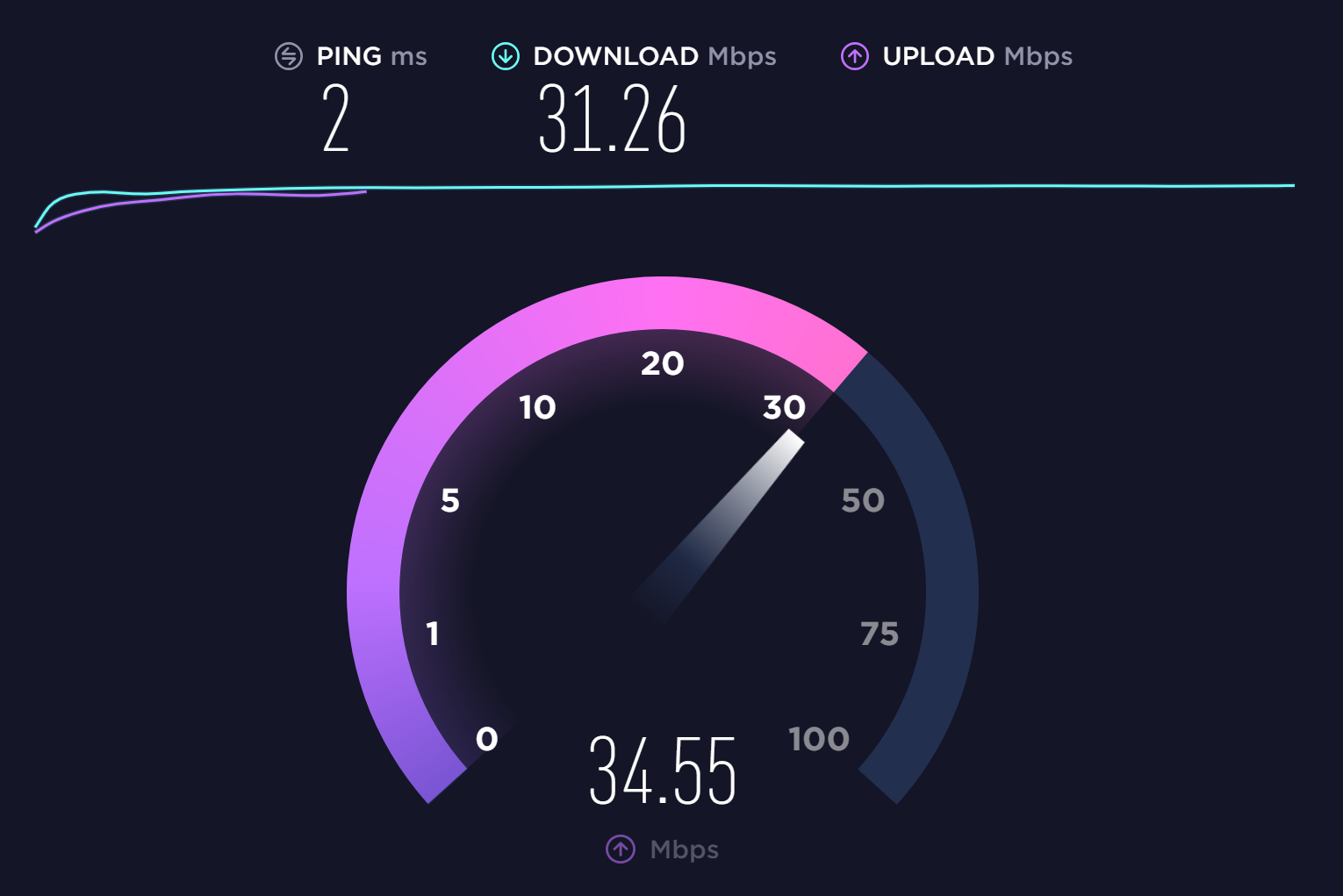

![How To Increase Your Internet Speed Right Now [GUIDE]](https://robots.net/wp-content/uploads/2022/04/how-to-increase-your-internet-speed-featured-300x175.jpg)
